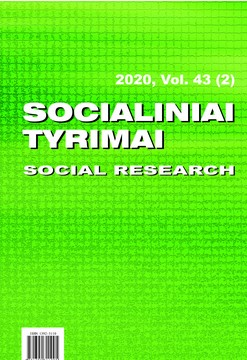Rizikos veiksnių valdymas medicinos turizmo organizacijose
Risk Factor Management in Medical Tourism Organizations
Author(s): Šarūnas BanevičiusSubject(s): Business Economy / Management, Health and medicine and law, Economic development, Tourism, Globalization
Published by: Vilniaus Universiteto Leidykla
Keywords: risk management; risk factors; risk assessment; medical tourism;
Summary/Abstract: Tourism, as the third largest export sector in the world, is of great importance to global communities (UNWTO, 2018). Global Wellness Institute (2018) until 2022 predicted for the medical tourism industry an average of ≈8% of annual growth; however, with one of the highest risks, i.e. disease risk (in this case COVID-19), since April 6 2020, 96% of the world’s countries have travel restrictions: 1. About 43 percent of states have closed all or part of their borders. 2. About 21 percent of states have introduced travel bans for passengers from certain countries affected by COVID-19. 3. About 27 percent of states have suspended all or part of their international flights to their destination. 4. The remaining 9% of states have applied the following travel restrictions: (i) the requirement to immediately dissociate or quarantine, normally within 14 days since the arrival at destination; (ii) annulment or revocation of the visa upon arrival; (iii) travel bans for passengers arriving from certain regions (UNWTO, 2020). As a result, the tourism industry, alongside with medical tourism, is experiencing a major recession and the GWI (2018) forecast for 2022 loses its meaning. As a new form of tourism, medical tourism has become one of the fastest growing sectors of the tourism industry. Medical tourism can be defined as a “purposeful trip abroad to receive medical care” (Keckley and Underwood, 2008). Medical tourism can be viewed from two perspectives (Plianbangchang, 2018): 1. Reactive means medical care that pays special attention to the treatment or elimination of existing diseases; Rehabilitation of the disabled is a conventional medicine that is sometimes called the sickness industry. 2. Proactive approach to health ensures/preserves the well-being, these services are focused on health promotion and disease prevention. Heung et al. (2011), Ganguli and Ebrahim (2017), Tham (2018), Nilashia et al. (2019) found that the development of medical tourism in Australia, Hong Kong and Singapore is mainly influenced by the following factors: competence/human capital, infrastructure and superstructure, government approach/policy/regulation, the range of developed services, communication between different market segments, investment opportunities, lack of strategic planning, underdeveloped public-private partnerships and international cooperation, shortcomings in marketing and branding strategies, lack of a unified accreditation and certification system. However, the authors did not single out and assess one of the most important phenomena hindering development – the consequences caused by risk factors. Lithuanian researchers studied the risk in various aspects: patient safety, adverse event management, risk factor management and assessment (Kaleininkaitė and Trumpaitė, 2007; Buškevičiūtė and Leškevičiūtė, 2008; Kanapeckienė and Jurkuvėnas, 2009; Staliūnienė, 2009; Mekšriūnaitė and Rudaitis, 2013; Paškevičius, 2014; Stasytytė and Aleksienė, 2016; Jankauskienė and Kostereva, 2019; Babinskas and Kanapeckienė, 2019, etc.), however, the management of tourism risk factors has not been sufficiently studied yet. The following authors have examined the risk management of medical tourism in foreign literature: Wybo, 2004; Camillo, 2015; Mutalib et al., 2016; Winsena et al., 2016; Hasan et al., 2017; Plianbangchang, 2018; Ravulakollu et al., 2018; Nilashia et al., 2019; Lubowiecki-Vikuk and Dryglas, 2019; Hyder et al., 2019.
Journal: Socialiniai tyrimai
- Issue Year: 43/2020
- Issue No: 2
- Page Range: 26-34
- Page Count: 9
- Language: Lithuanian

